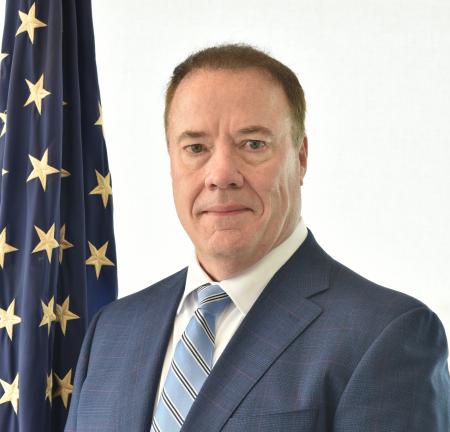Protecting Public Health through Science, Partnership--and a Unanimous Belief in the Common Good
Director
FDA Winchester Engineering and Analytical Center
As director of the FDA’s Boston-area Winchester Engineering and Analytical Center (WEAC), I have the distinct honor of working with some of the most talented researchers in the public health arena. The microbiologists, chemists, engineers, and analysts who surround me work diligently, day in and day out, often during times of emergency, to help ensure that the foods you and your family eat are safe, and that medical devices—used to diagnose and treat disease, and urgently save lives—are safe, effective, and able to perform precisely as intended.
They also, all 55 of them, believe in doing work that makes a difference. I’ll elaborate on that in a moment.
A Scientific Line of Defense
Our WEAC scientists stand at the ready, laser-focused on identifying potential harms, some unthinkable, in products we regulate. They might be looking for a shifty, hard-to-identify bacterium that’s making Americans sick, or the pernicious, persistent radioactive particles that could threaten the safety of our imported food supply, in the event of a nuclear tragedy. Learn more about one of our dedicated scientists who’s working tirelessly in this area.
WEAC researchers are also nationally recognized experts in evaluating the safety of the country’s medical devices—which includes x-ray systems, defibrillators, as well as the vast array of medical implants, like pacemakers and ports, and cardiac stents, critically needed by many U.S. patients. Our microbiologists are also responsible for analyzing those devices, exhaustively, for hidden pathogens that might otherwise make patients seriously ill, as you can read about in our feature story.
Solving Problems
But fulfilling and advancing regulatory science is only part of our DNA here at WEAC. Far more than simply testing food, devices, and drugs (as well as e-cigarettes and other Electronic Nicotine Delivery System (ENDS) products) for compliance and safety, our researchers are zealous problem solvers, who work in an environment that provides access to state-of-the-art laboratory and computer technologies, cultivates scientific multidisciplinary interaction and collaboration, upholds scientific excellence and integrity, and fosters unbounded, creative thinking.
Our scientists and engineers deliver seminal contributions in the fields of food and medical device safety—breakthroughs labored over with partners in academia and industry for the most immediate public health impacts possible. These advances have included technology to better understand why cardiac stents sometimes break - - findings leading the way to more impeccably designed and failproof devices. Such inventions have also included futuristic-style lab-on-a-chip technologies for use in speedy infectious disease diagnosis. These low-cost lateral flow devices (similar to a pregnancy test) and their accompanying technology can be used in remote and emergency conditions, to rapidly identify a harmful bacterial or viral agent causing a patient’s serious illness and potentially threatening a greater outbreak. This seminal work has since progressed into real-world data collection as part of a million-dollar grant to a start-up with our MIT collaborators.
And as our demand for global food imports grows, our WEAC researchers continue to hunt for ways to bring speedier safety tests to more remote locations. This includes, done on site to scan for the presence of harmful nuclear contaminants in our teams directly supported in the months and years following the 2011 Fukushima nuclear accident nuclear accident.
Scientific Capabilities and Collaboration
We’ve come a long way since the days of rainy-day buckets lining the hallways of the 1956 Atomic Energy Commission (AEC) building from where we came. Our new facility, which I invite you to explore in this video, was completed just last winter, and provides the scientifically sophisticated form needed to support our unique public health functions.
In addition to benefitting from the latest scientific tools available, our scientists are able to innovate and create given the many brilliant and energized partners in their midst. With guidance and support from FDA’s Technology Transfer Program, WEAC scientists toil constructively with collaborators at MIT and Harvard, and their biotech and innovative science spaces in Greater Boston. These partnerships extend to the private sector, too, leveraging the best of government, industry, and academia—all in the name of public health.
A Mission
And, finally, it’s worth noting that an abiding factor in WEAC staff’s drive and quest for excellence is a solidly shared public service creed. Recently, when our employees were asked about various aspects of their job, only one item, a statement, was agreed upon by all:
“It’s important to me that my work contribute to the common good.”
This sentiment isn’t unusual across federal government workers (that’s part of why we’re drawn to public service in the first place) but it’s important to note, for you, our readers, that making a difference in people’s lives is a genuine and real motivation. Our researchers, pushing the edges of science, are indeed incredibly smart and talented. But they’re also empathetic, inspired by a cause much bigger than them.
Brian L. Baker, P.E.
Director, Winchester Engineering and Analytical Center

